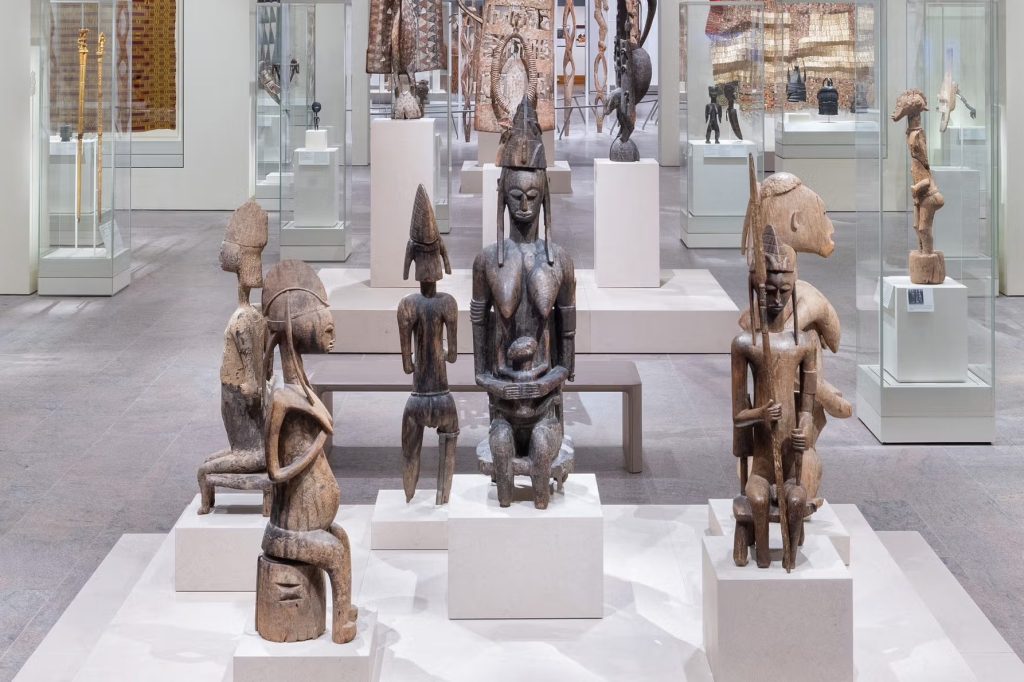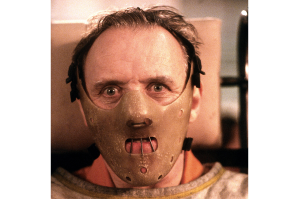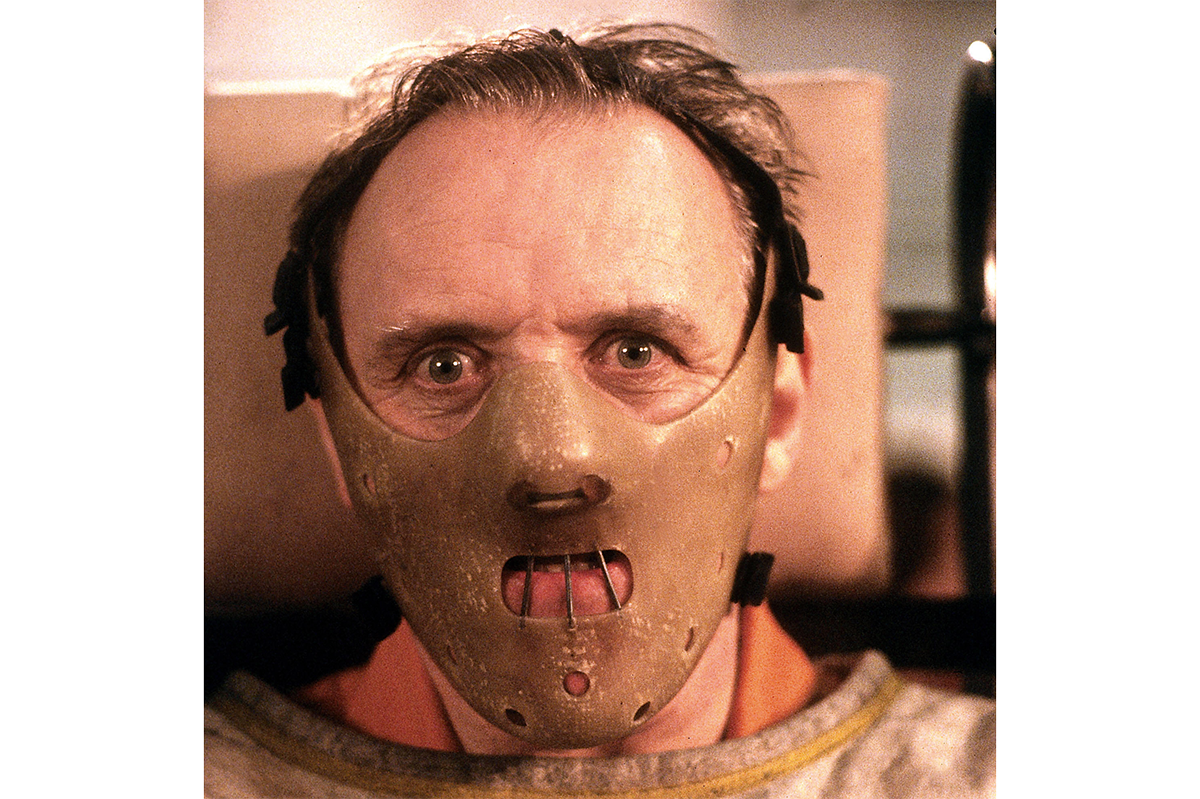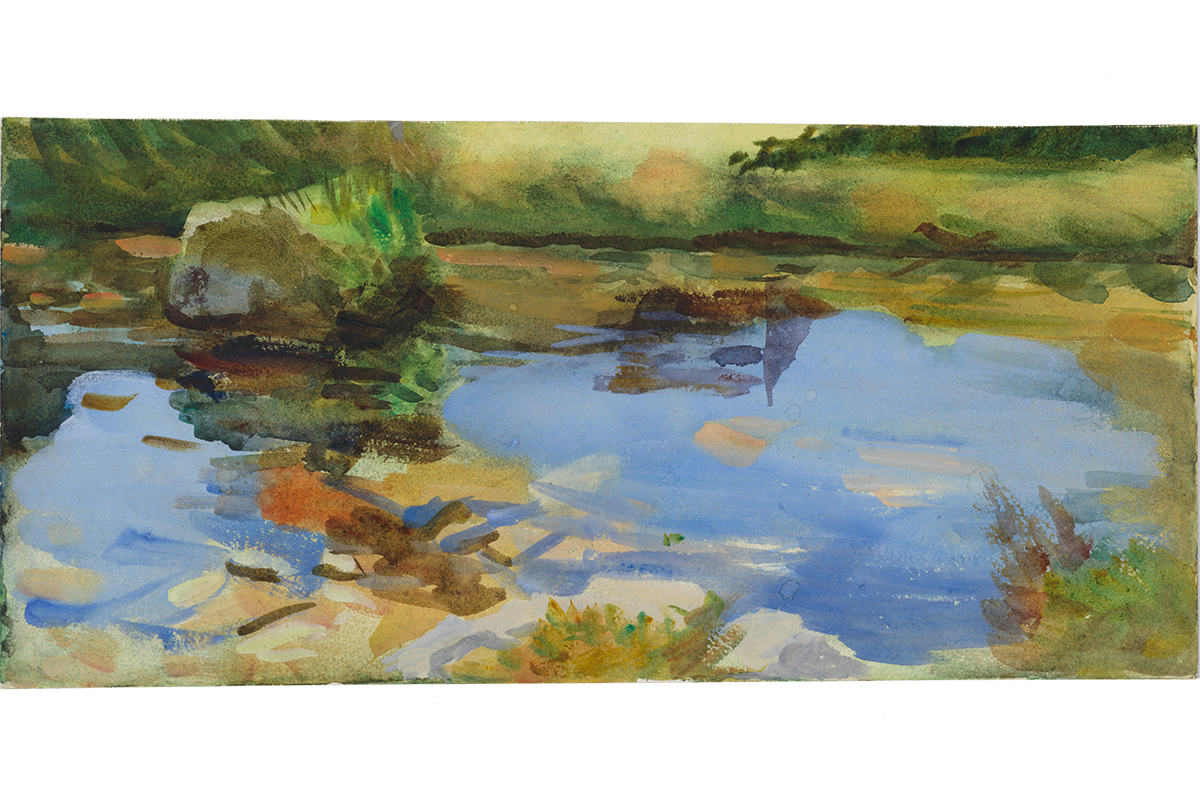Of the 1,800 objects on display at the newly reopened Michael C. Rockefeller Wing at The Metropolitan Museum of Art, the funerary poles of the Asmat people stick out.
At 15 feet tall, they tower above the swarm of visitors and nearly touch the newly rendered, gorgeously curved ceilings. The poles, decorated with carvings of haunted-looking faces and bodies, were traditionally made to mark a violent death. Once that death was avenged, the poles were removed to the woods, where they were left to decay.
These particular poles have further meaning, though, beyond their eerie beauty and the symbolism they confer of the cycle of life. They were collected by Nelson Rockefeller’s son, Michael, on a trip to spend time with the Asmat in New Guinea in 1961. It was on that same visit that Michael, an anthropologist, disappeared at the age of just 23.
Michael’s body was never found, despite an extensive search effort (it is suspected that he drowned after his pontoon overturned). When the Met finally accepted Nelson’s extensive collection of art from Africa, Oceania and the ancient Americas, he named the newly opened 1982 wing after his son – memorialising, in his own way, the dead.
Now that wing is open again to the public for the first time since 2021, following a $70 million renovation. The refreshed galleries – featuring works from five continents – were designed by Kulapat Yantrasast’s WHY Architecture in collaboration with Beyer Blinder Belle Architects and the Met’s Design Department. While the old Rockefeller Wing felt cramped, poky and dark, despite being 40,000 square feet, the redesigned space is expansive – breathtaking in form as much as it is in content.
And what a joy it is to walk through. There’s the white domed ceiling (decked with vast arched ribs that reminded me of whale bones or an upturned boat hull) and slanted windows that face Central Park, filtering in light over the sturdy stone sculptures of the Americas. The more delicate art of Oceania, meanwhile, has been moved to the interior, where the materials, such as wood or fiber, can be protected from the damaging sun.
Light is central here: both in terms of practicality (protecting those more vulnerable pieces) but also philosophically. The redesign works because it shines a light on an abundance of treasures as they should be seen: not tucked away in dusty corners, as if irrelevant to modern life, but mounted in crisp glass display boxes, which provide a 360-degree view and are airy and porous, inviting a two-way conversation.
Those treasures cover every type of material. There is a sturdy fabric cloak from the Māori in New Zealand; a soapy-looking sandstone sculpture from the Huastec of Mexico; and a painted wooden face mask with grimacing blue teeth from Liberia. The dates range from 900-400 BC (a jade sculpture of an Olmec head from Mexico) to the contemporary: Ghanaian artist El Anatsui’s metal tapestry – a comment on transatlantic trade – which was created from old bottle caps, shimmers and shines on the wall, like a frozen golden wave.
Tension is also provided from the juxtaposition of big and small. A tiny golden coiled snake, with beady staring eyes, is a symbol of feminine energy and fertility for the artisans of Cote d’Ivoire. That snake is as worth taking the time to appreciate as much as the more show-stopping pieces. These include a staggering 80-foot-long suspended ceiling from Papua New Guinea, commissioned in 1970 by the Met, and a taki,or colossal carved crocodile figure, also from the region. (Crocodile spirits were said to appear in men’s dreams to encourage thoughts of war – deceased enemy skulls were placed in the jaws of the taki).
The Rockefeller Wing, of course, remains politically charged. There is the question of repatriation of works to their country of origin, particularly those which might have been stolen. That debate is barely touched upon and – rightly or wrongly – the redesign seems to state, through its boldness and emphasis on clarity and light, that this is where these works belong.
It is worth, remembering, too that the Met did not always want Nelson Rockefeller’s collection. When he first approached the museum to discuss donation in the 1940s, he met with resistance: he was told to give it to the Museum of Natural History instead (such non-Western “primitive” works were viewed then as anthropological pieces to study rather than art in its own right). It was only in 1969 that the Met saw sense and relented, leading to the wing’s original 1980s opening.
It is heartening, then, to see the Met not only prioritizing these riches but showing them with such ambition and oomph. Nowhere is this better witnessed than near the entrance, where a powerful wooden sculpture of a priest from Mali welcomes visitors with arms raised. He is naked and earthy, with a prominent bead and a slightly open mouth that gives the impression he is in the midst of a religious incantation. In a phrase that could stand in for every object here, the caption reads that the figure is “earthbound but reaching for the heavens.”


























Leave a Reply